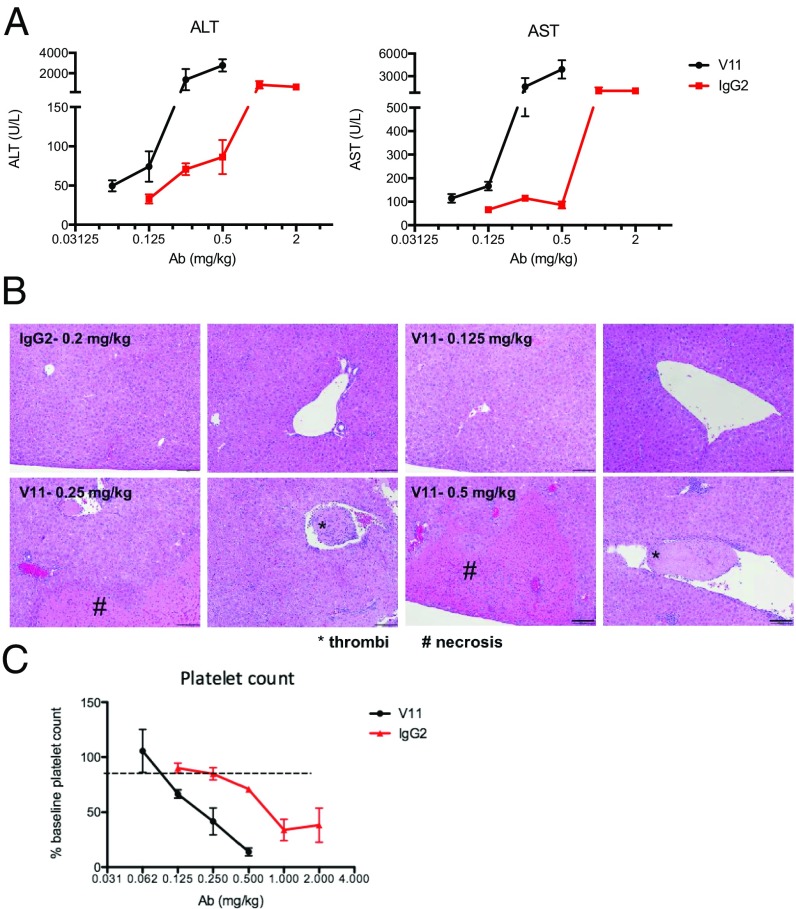Fig. 1.
Improved FcγRIIB binding enhances in vivo toxicity of anti-CD40 antibodies. (A) Toxicity of liver transaminases in response to increasing levels of anti-CD40 antibodies. Mice were treated with increasing doses of 2141-V11 or the parental IgG2 anti-CD40 antibody and liver transaminases (AST and ALT) were measured. Data include three to five mice at each concentration. (B) Livers from mice treated with 2141-V11 show evidence of intravascular thrombi and hepatocyte necrosis. Mice treated with 2141-IgG2 showed no toxicity at 0.2 mg/kg or below. Mice treated with 2141-V11 demonstrated evidence of intravascular thrombi and hepatocyte necrosis starting at dose 0.25 mg/kg or greater. Representative images from mice treated at each concentration are shown. Intrahepatic thrombi are marked by an asterisk (*), whereas hepatocyte necrosis is marked by a pound (#) sign. Scale bars demonstrating intrahepatic necrosis and thrombi are 200 μm or 40 μm, respectively. (C) Toxicity of murine platelets in response to increasing levels of anti-CD40 antibodies. Mice were treated with increasing doses of 2141-V11 or the parental IgG2 anti-CD40 antibody and platelets were measured. Data include three to five mice at each concentration.

